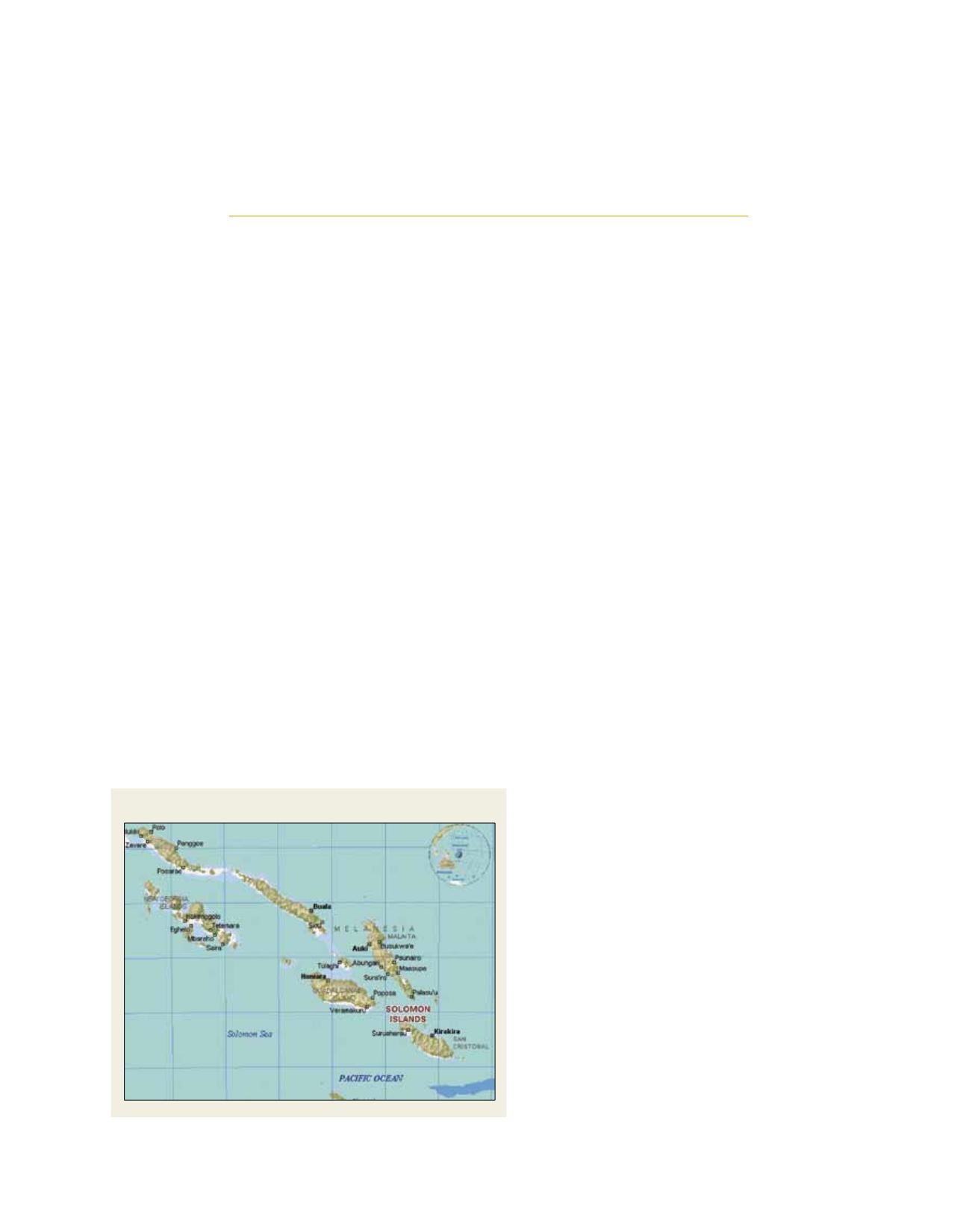

[
] 102
Informing decision-making in health
using seasonal climate outlooks
Yahya Abawi, Jason A. Smith, Amanda Amjadali, David Jones,
Diann Woods and Michael J. Coughlan, Australian Bureau of Meteorology;
and Lloyd Tahani, Solomon Islands Meteorological Service
T
he Pacific region experiences substantial climate variabil-
ity as a result of the El Niño Southern Oscillation (ENSO).
Specifically, the seasonal changes in rainfall and temper-
ature can cause droughts, flooding and temperature extremes.
Fortunately for the region, many of the associated impacts are
predictable using statistical and dynamical climate models,
allowing a degree of preparedness and proactive management of
the most severe impacts.
The Government of Australia (GoA) has contributed signifi-
cant resources to supporting Pacific islands’ management of and
responses to climate variability and change. GoA funds a range of
climate-related programmes and projects through the bilateral and
regional programmes of the Australian Agency for International
Development (AusAID). One such project is the Pacific Islands
Climate Prediction Project (PI-CPP), which has been implemented
by the Australian Bureau of Meteorology. The goal of PI-CPP was to
strengthen the capacity of Pacific Island countries (PICs) in seasonal
climate prediction and to provide climate-related information. A
key component of the project was to build indigenous capability in
preparing and issuing seasonal forecasts, noting the significant skill
potential value of forecasts.
From the outset, it was recognized that merely
supporting National Meteorological Services (NMSs)
to produce seasonal climate forecasts would not
guarantee their effective uptake by climate-sensitive
industries and resource managers. A key compo-
nent of PI-CPP, therefore, has been a pilot project
programme to use the seasonal forecasts to support
vulnerable sectors such as health, agriculture, water
and renewable energy. Integral to each pilot project
have been follow-up visits and workshops in the
participating PICs to outline the project results and
explore the potential for developing operational
information and warning systems. The implementa-
tion and sustained operation of such systems require
close collaboration and coordination between NMSs
as the primary providers of climate information and
the user/client groups that need to integrate the
information into their planning, management and
decision-making processes.
1
ENSO and malaria in the Solomon Islands
One such pilot project on the application of seasonal
forecasts has been the development of a prototype
malaria early warning system in the Solomon Islands.
In order to facilitate the project, the PI-CPP team coor-
dinated with both the Solomon Islands Meteorological
Service (SIMS) and the Solomon Islands Medical
Training and Research Institute (SIMTRI). A principal
objective of the project was to develop malaria outlooks
based on the historical relationship between malaria
incidence and the effects of the ENSO phenomenon
on rainfall and temperature. Determining the precise
nature of this correlation was itself a key component
of the project and the subject of lengthy investiga-
tion. Once the relationships were well understood, it
became possible to develop a prototype early warning
system in which SIMS could issue bulletins for periods
in which upcoming climate conditions were favour-
able for high malaria incidence, thus allowing medical
services and residents to take measures to minimize
infection. It is also expected that such forecasts would
provide sufficient lead time for healthcare services to
efficiently incorporate in their planning the need for
additional medical resources during these periods.
H
ealth
Map of the Solomon Islands showing major islands and towns
Source: Australian Bureau of Meteorology
















